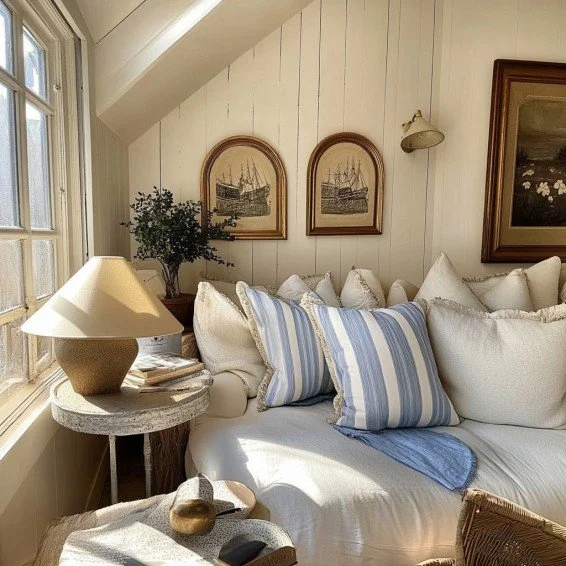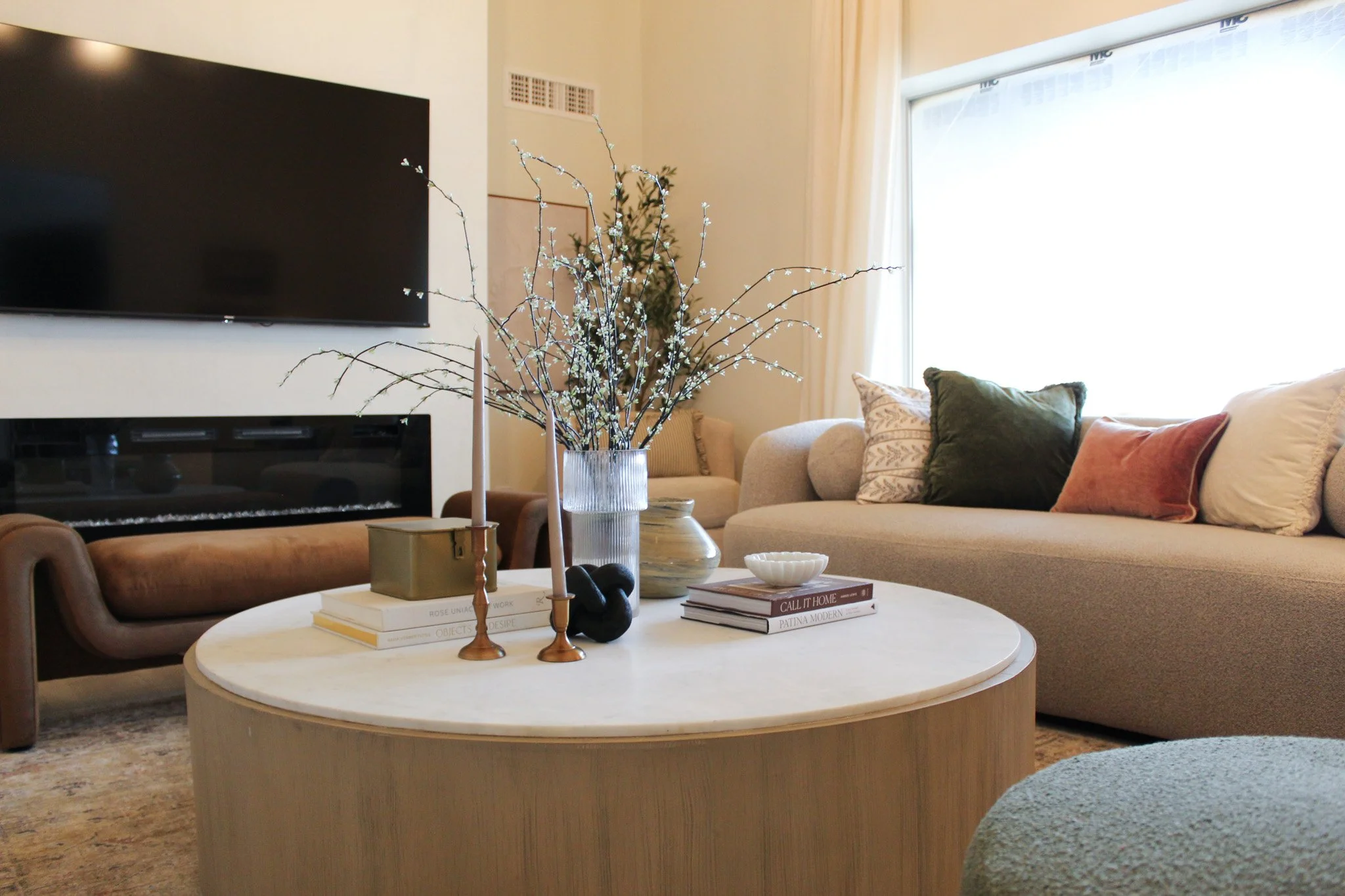How to Avoid Trendy Mistakes and Create a Timeless Modern Home
Interior trends move fast. One season it’s curved sofas; the next, moody walls and textured plaster. Trends are fun—but they can quickly make a room feel dated. A timeless modern home isn’t about ignoring trends. It’s about designing with intention so your space feels fresh today and still right years from now.
Here’s how designers think about longevity—and how you can apply their strategies to your home.
1. Start With How You Live — Not What’s Trending
Design that lasts starts with lifestyle, not Instagram feeds. Ask yourself:
Where does your family actually spend time?
Do you need surfaces that are easy to clean for kids or pets?
Do you work from home and need quiet, functional zones?
When decisions are rooted in your life, they naturally avoid fads that look great in photos but fail in everyday use. Designers always begin with needs first—this prevents impulse purchases that don’t fit your routine or space.
Interactive Tip:
“Create a “daily life map” of your home. Mark where you spend time, where clutter accumulates, and which spaces need the most function. This becomes your foundation for all design choices.”
2. Invest in Foundation Pieces; Use Trends as Accessories
Think of your home like a wardrobe:
Foundation pieces — sofa, dining table, kitchen cabinets — should be high-quality, neutral, and well-proportioned.
Trend pieces — throws, pillows, small lamps, artwork — are easy to swap when tastes change.
A neutral, well-made sofa lasts for years; a velvet pillow in a trending color can be replaced next season. This way, large investments remain timeless, while you still enjoy seasonal style safely.
3. Build a Consistent Color Story
One reason rooms feel “dated” is color discord. Pick a palette of 3–5 tones and repeat them throughout the home:
Main neutral: warm white, greige, soft taupe
Supporting tone: muted blue, soft green, warm clay
Accent metal: brass, black, brushed nickel
Optional pop: deep teal, terracotta
Repeating colors across rooms creates visual flow and cohesion—a subtle trick that makes a house feel intentionally designed rather than a collection of trends..
4. Prioritize Texture Over Trendy Patterns
Texture adds depth and sophistication without locking you into a fleeting motif. Layer natural textures:
Linen, wool, and cotton for textiles
Wood and stone for surfaces
Woven baskets, rattan, and matte metals for accents
A room rich in tactile contrast feels curated and enduring. Loud wallpaper or a patterned rug may date a space in a few seasons—texture lasts.
Pro Tip: Mix smooth and rough, matte and natural, soft and structured to create a room that feels dynamic but timeless.
5. Choose Lighting That Enhances — Not Competes
Trendy light fixtures can define a space—and date it instantly. Instead:
Layer ambient, task, and accent lighting
Use warm bulbs and dimmers to create a mood
Pick fixtures with simple silhouettes and personality via lamps or shades
Lighting should flatter the room and its users, not scream for attention.
6. Pick Materials That Age Gracefully
Some finishes look great in photos but don’t handle real life. Designers choose materials for longevity:
Solid wood over cheap veneers
Natural stone or durable engineered surfaces
Performance fabrics for sofas and drapery
Matte or satin finishes that hide wear
Quality materials cost more upfront but save money and headaches over time—and they help your home stay beautiful as trends shift.
“Note: MDF cabinets may look nice and trendy today, but a timeless, solid wood retains its beauty for decades.”
7. Edit Ruthlessly — Quality Over Quantity
Timeless spaces feel intentional, not cluttered. Before buying:
Ask: “Does this add value, function, or joy?”
Remove items that exist only because they’re trendy
Keep a few standout pieces and let them breathe
Editing creates calm, clarity, and longevity. A minimalist, curated room often feels more expensive and sophisticated than one crowded with trendy décor.
“Interactive Tip: Pick one room and remove 10 items. Notice the immediate visual impact.”
8. Avoid Full Theme Overloads
Themes (coastal, boho, farmhouse) are fun but can age a room quickly if followed too strictly. Instead:
Pull subtle nods from a style rather than committing fully
Use materials and textures to hint at a theme
Keep foundational pieces neutral and layer themed elements in accessories
A suggestion is timeless; an entire theme is temporary.
9. Plan Layout and Flow — Think Big Picture
Trends often ignore spatial logic. Designers think in systems:
Furniture scale and placement for natural circulation
Sightlines between rooms for cohesion
Storage is integrated into the design, so the function doesn’t interrupt the style
Good planning prevents oversized furniture, blocked pathways, and awkward arrangements—problems that trends can’t foresee.
Pro Tip: Sketch your room layout before buying new pieces. Test circulation paths with tape on the floor if needed.
10. Add Personal Elements That Never Go Out of Style
Items with emotional value—family photos, travel finds, heirlooms—make spaces feel lived-in and unique. These personal artifacts anchor a modern palette and keep a home feeling authentic, not showroom-styled.
Creative Hook: Let your home tell your story. Trendy items fade, but memories last.
Final Thought: Timelessness Is a Strategy
Timeless design isn’t about avoiding trends—it’s about making intentional choices that fit your life, space, and personal style. By starting with function, investing in quality, layering texture and color, and keeping your home curated and personal, you create a space that grows with you, not against you.
Questions?
We’re an open book! Schedule a call or fill out the inquiry form below if you’re ready to start.
If you’re not ready, save this blog post for when you are!







